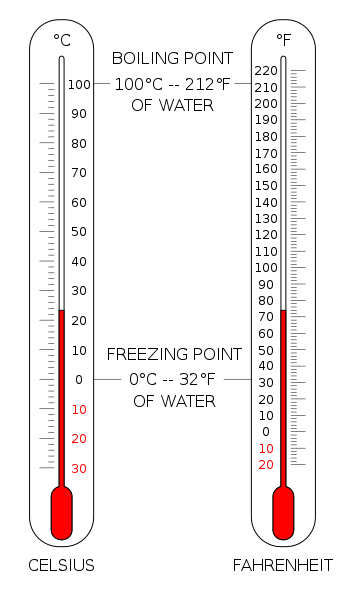- Temperature: This is measured using a mercury thermometer read in degree celcius (ºc). At least two readings are taken in a particular area of the habitat being studied to ensure accuracy. A soil thermometer is used for soil temperature, a maximum-minimum thermometer for recording the highest and lowest temperature of the day, and a waxed bulb thermometer for temperature of water at different depths in a pond, stream, etc. The waxed bulb thermometer is usually tied to a string knotted at regular intervals to indicate depth.

- Rainfall: This is measured with a rain gauge. This can be made from a tin can, a plastic funnel and a 50ml measuring cylinder. The amount of rainfall is calculated in millimeters, with the formuladD2×h= rainfall for a period where;d = diameter of mouth of funnelh = height of rainwater in the cylinderD = diameter of collecting cylinderUsually, the height of the water in the cylinder indicates the amount of rainfall after every storm.
- Relative Humidity: This is measured using a wet and dry bulb hygrometer, or a pocket hygrometer. The pocket hygrometer is exposed to air and the reading taken after the lever arm has stabilized. The wet and dry bulb hygrometer is swung in air for 30seconds and the reading on the thermometers taken and converted to relative humidity units using a table of conversion. The hygrometer may also be kept in a Stevenson’s screen.
- Wind:Wind has both speed and direction. Wind direction is measured / indicated by a wind vane while wind speed is measured with an anemometer (recorded in ms־¹).
- Light Intensity: Is measured by a light meter or photometer. The readings on the meter are expressed in lux units. The greater the intensity of light, the higher the readings on the meter and vice-versa.
- Pressure: Atmospheric pressure is measured with a barometer. It is measured in millibars (or millimeters of mercury, mmHg). The readings are taken directly from a scale.
 Picture: Modern Aneroid barometer
Picture: Modern Aneroid barometer - Water Depth: Is measured with a meter rule or a marked and weighted line knotted at one meter intervals. The meter rule is attached to a weighted line to ensure that it is vertical in water.
- Water Flow: To measure the speed of flow of a water body, the distance (m) covered per unit times by a float is taken. The float may be a weight tube and the distance covered has to be pre-determined. Speed of the current is calculated in meters per second. A simple water-speed meter can be used to compare the speed of water flow at different positions in a stream
- Turbidity: Is measured by slowly sinking a weighted white disc called a secchi disc into the water, noting the depth at which it just cannot be seen anymore. This is not a real measurement of turbidity but a useful method of comparing the turbidity of different aquatic habitats, different sites of the same habitats, or at different times.
- Slope: Is measured with a simple slope gauge constructed with a meter rule to which a protractor is attached. The angle readings on the protractor are read and recorded. Small angles indicate a steep slope.
- Height: The height of objects like tall trees is measured using the principle of similar triangles.
Categories

 Picture: Modern Aneroid barometer
Picture: Modern Aneroid barometer